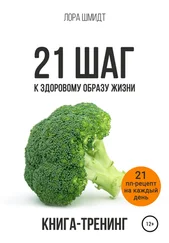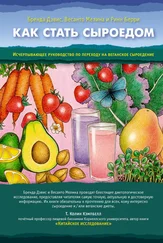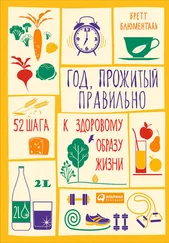14. Key TJ, Spencer EA. Carbohydrates and cancer: an overview of the epidemiological evidence. Eur J Clin Nutr . 2007; 61(S1): S112–S121.
15. Kabat GC, Kim MY, Strickler HD, et al. A longitudinal study of serum insulin and glucose levels in relation to colorectal cancer risk among postmenopausal women. Br J Cancer . 2012; 106(1): 227–232.
16. Romanos-Nanclares A, Toledo E, Gardeazabal I, Jiménez-Moleón JJ, Martínez-González MA, Gea A. Sugar-sweetened beverage consumption and incidence of breast cancer: The Seguimiento Universidad de Navarra (SUN) Project. Eur J Nutr . October 2018.
17. Institute of Medicine. Dietary Reference Intakes for Energy, Carbohydrate, Fiber,Fat,FattyAcids,Cholesterol,Protein,andAminoAcids. Washington, D.C.: National Academies Press. 2002.
18. van Dam RM, Seidell JC. Carbohydrate intake and obesity. Eur J Clin Nutr . 2007; 61(S1): S75–S99.
19. Ruanpeng D, Thongprayoon C, Cheungpasitporn W, Harindhanavudhi T. Sugar and artificially sweetened beverages linked to obesity: A systematic review and meta-analysis. QJM An Int J Med . 2017; 110(8): 513–520.
20. Paschos P, Paletas K. Non-alcoholic fatty liver disease and metabolic syndrome. Hippokratia . 2009; 13(1): 9–19.
21. Vreman RA, Goodell AJ, Rodriguez LA, et al. Health and economic benefits of reducing sugar intake in the USA, including effects via non-alcoholic fatty liver disease: A microsimulation model. BMJ Open . 2017; 7(8): e013543.
22. Nier A, Brandt A, Conzelmann I, et al. Non-alcoholic fatty liver disease in overweight children: Role of fructose intake and dietary pattern. Nutrients . 2018; 10(9): 1329.
23. Nseir W, Nassar F, Assy N. Soft drinks consumption and nonalcoholic fatty liver disease. World J Gastroenterol . 2010; 16(21): 2579–2588.
24. Ter Horst KW, Serlie MJ. Fructose consumption, lipogenesis, and non-alcoholic fatty liver disease. Nutrients . 2017; 9(9).
25. Jamnik J, Rehman S, Blanco Mejia S, et al. Fructose intake and risk of gout and hyperuricemia: A systematic review and meta-analysis of prospective cohort studies. BMJ Open . 2016; 6(10): e013191.
26. Ebrahimpour-koujan S, Saneei P, Larijani B, Esmaillzadeh A. Consumption of sugar sweetened beverages and dietary fructose in relation to risk of gout and hyperuricemia: A systematic review and meta-analysis. Crit Rev Food Sci Nutr . October 2018: 1–10.
27. O’Connor L, Imamura F, Brage S, Griffin SJ, Wareham NJ, Forouhi NG. Intakes and sources of dietary sugars and their association with metabolic and inflammatory markers. Clin Nutr . 2018; 37(4): 1313–1322.
28. Stegenga ME, Crabben SN van der, Dessing MC, et al. Effect of acute hyperglycaemia and / or hyperinsulinaemia on proinflammatory gene expression, cytokine production and neutrophil function in humans. Diabet Med . 2008; 25(2): 157–164.
29. Della Corte K, Perrar I, Penczynski K, et al. Effect of dietary sugar intake on biomarkers of subclinical inflammation: A systematic review and meta-analysis of intervention studies. Nutrients . 2018; 10(5): 606.
30. Takeuchi M, Iwaki M, Takino J, et al. Immunological detection of fructose-derived advanced glycation end-products. Lab Invest. 2010; 90(7): 1117–1127.
31. Gugliucci A. Formation of fructose-mediated advanced glycation end products and their roles in metabolic and inflammatory diseases. Adv Nutr An Int Rev J . 2017; 8(1): 54–62.
32. Jang C, Hui S, Lu W, et al. The small intestine converts dietary fructose into glucose and organic acids. Cell Metab . 2018; 27(2): 351–361.e3.
33. Schwarz J-M, Noworolski SM, Erkin-Cakmak A, et al. Effects of dietary fructose restriction on liver fat, de novo lipogenesis, and insulin kinetics in children with obesity. Gastroenterology . 2017; 153(3): 743–752.
34. Schwarz J-M, Noworolski SM, Wen MJ, et al. Effect of a high-fructose weight-maintaining diet on lipogenesis and liver fat. J Clin Endocrinol Metab . 2015; 100(6): 2434–2442.
35. Wells HF, Buzby JC. Economic Information Bulletin Number 33 Dietary Assessment of Major Trends in U.S., 2008. URL: www.ers.usda.gov. Accessed January 22, 2019.
36. Tappy L, Lê K-A. metabolic effects of fructose and the worldwide increase in obesity. Physiol Rev . 2010; 90(1): 23–46.
37. U.S. Deparment of Agriculture. Agriculture Research Service. Nutrient Data Library. USDA National Nutrition Database for Standard Reference, Legacy Version Current: April 2018. URL: https://ndb.nal.usda.gov/ndb/search/list.
38. White JS. Straight talk about high-fructose corn syrup: What it is and what it aint. Am J Clin Nutr. 2008; 88: 1716–1721.
39. Le MT, Frye RF, Rivard CJ, et al. Effects of high-fructose corn syrup and sucrose on the pharmacokinetics of fructose and acute metabolic and hemodynamic responses in healthy subjects. Metabolism . 2012; 61(5): 641–651.
40. Wikipedia contributors. Fructose: Carbohydrate Content of Commercial Sweeteners. Wikipedia, The Free Encyclopedia. URL: https://en.wikipedia.org/wiki/Fructose. Accessed Jan. 21, 2019.
41. Wise PM, Nattress L, Flammer LJ, Beauchamp GK. Reduced dietary intake of simple sugars alters perceived sweet taste intensity but not perceived pleasantness. Am J Clin Nutr . 2016; 103(1): 50–60.
42. U.S. Department of Health and Human Services and U.S. Department of Agriculture. 2015–2020 Dietary Guidelines for Americans. 8th Edition.December2015. 8th ed. USDA; 2015. URL: https://health.gov/dietaryguidelines/2015/guidelines/. Accessed Jan. 21, 2019.
43. Imamura F, O’Connor L, Ye Z, et al. Consumption of sugar sweetened beverages, artificially sweetened beverages, and fruit juice and incidence of type 2 diabetes: systematic review, meta-analysis, and estimation of population attributable fraction. Br J Sports Med . 2016; 50(8): 496–504.
44. Park A. Processed foods a big source of added sugar. Time Magazine . URL: http://time.com/4252515/calories-processed-food/. Published 2016. Accessed January 22, 2019.
45. Lenhart A, Chey WD. A systematic review of the effects of polyols on gastrointestinal health and irritable bowel syndrome. Adv Nutr . 2017; 8(4): 587–596.
46. Arrigoni E, Brouns F, Amadò R. Human gut microbiota does not ferment erythritol. Br J Nutr .2005; 94(5): 643–646.
47. U.S. Food and Drug Administration. Food additives and ingredients; Additional Information about High-Intensity Sweeteners Permitted for Use in Food in the United States. 2018. URL: https://www.fda.gov/Food/IngredientsPackagingLabeling/FoodAdditivesIngredients/ucm397725.htm. Accessed January 22, 2019.
48. Zhang Q, Yang H, Li Y, et al. Toxicological evaluation of ethanolic extract from Stevia rebaudiana Bertoni leaves: Genotoxicity and subchronic oral toxicity. Regul Toxicol Pharmacol . 2017; 86: 253–259.
49. Ramos-Tovar E, Hernández-Aquino E, Casas-Grajales S, et al. Stevia prevents acute and chronic liver injury induced by carbon tetrachloride by blocking oxidative stress through Nrf2 upregulation. Oxid Med Cell Longev . 2018; 2018: 1–12.
50. Samuel P, Ayoob KT, Magnuson BA, et al. Stevia leaf to stevia sweetener: Exploring its science, benefits, and future potential. J Nutr . 2018; 148(7): 1186S–1205S.
51. Chen J, Xia Y, Sui X, et al. Steviol, a natural product inhibits proliferation of the gastrointestinal cancer cells intensively. Oncotarget . 2018; 9(41): 26299–26308.
52. Sievenpiper JL, Chan CB, Dworatzek PD, et al. 2018 Clinical Practice Guidelines Nutrition Therapy Diabetes Canada Clinical Practice Guidelines Expert Committee. Canadian Journal Diabetes. 2018; 42 Suppl 1: S64–S79.
Читать дальше
Конец ознакомительного отрывка
Купить книгу
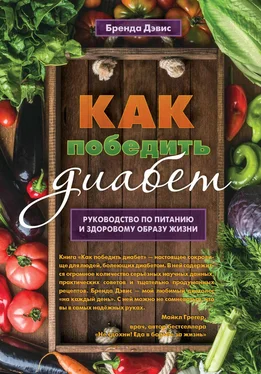

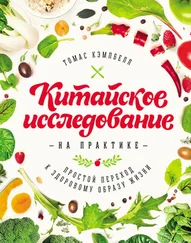
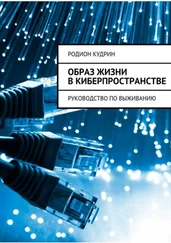
![Карин Дина - Справочник сыроеда [Краткое руководство по питанию свежей растительной пищей]](/books/389267/karin-dina-spravochnik-syroeda-kratkoe-rukovodstvo-thumb.webp)




